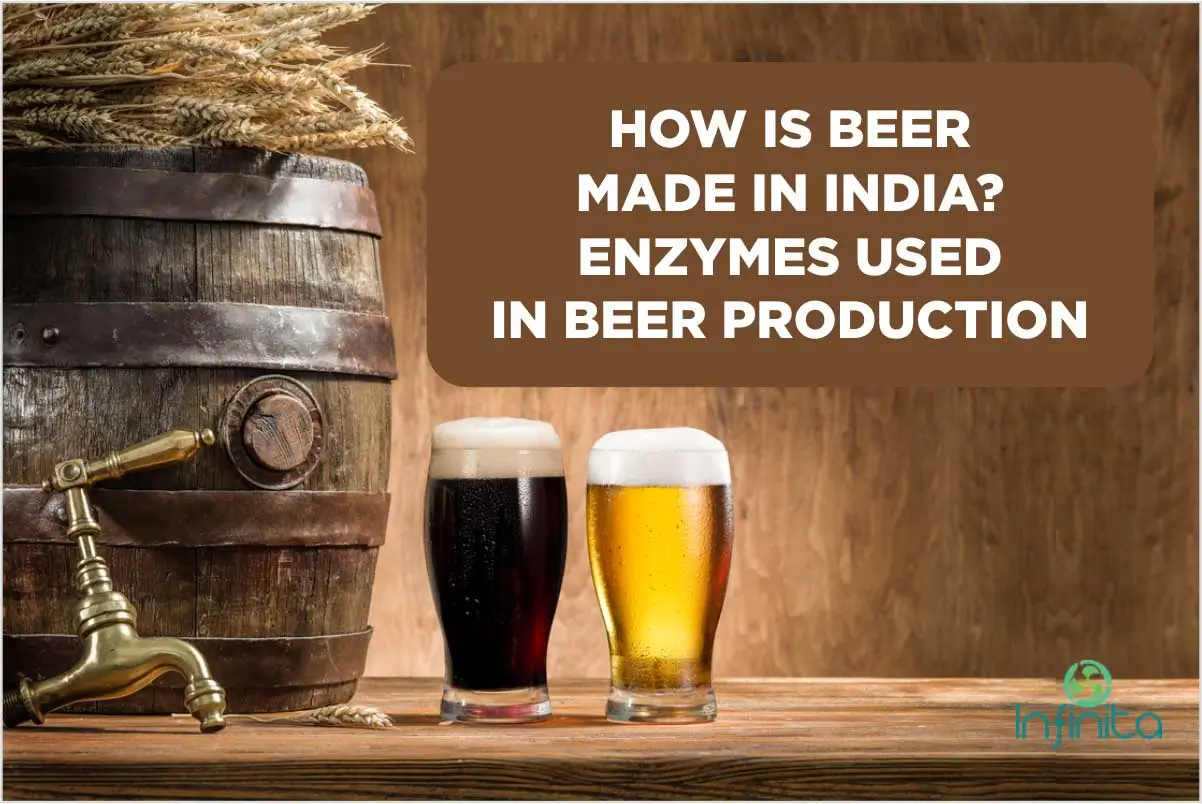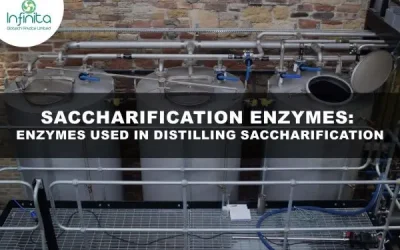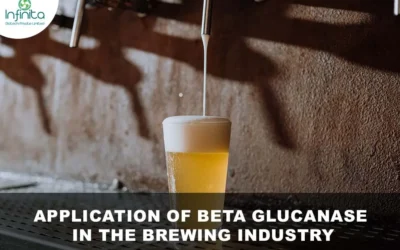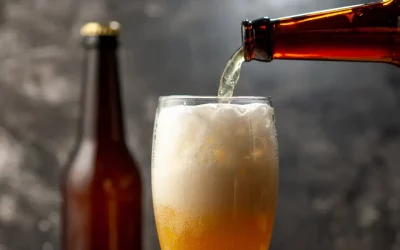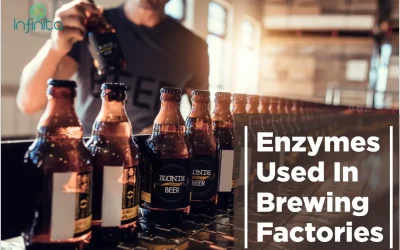The family of beverages generally referred to as “beer” has been brewed for centuries. Beers are obtained by the yeast fermentation of malted cereal grains, to which hops and water have been added. Brewing has evolved from a cottage craft into a modern industry where large breweries export their beers worldwide. The current annual beer consumption in India is approximately- 2 litres per capita.
The true origin of beer can only be conjectured. Early attempts at brewing occurred around 7000 BC in Mesopotamia. The Egyptians and Greeks also brewed alcoholic beverages by various methods, but the term “beer” did not appear in these early languages. The Babylonians offered brewing recipes, and there are various references to beer in the Bible. The English word “beer” seems to stem from the Celtic word “beor,” which referred to a malt brew made by monks at a North Gaul monastery.
Raw Materials
Beer requires these ingredients for brewing: properly prepared cereal grain (usually barley and corn or rice), hops (scientific name Humulus lupulus), pure water, and brewer’s yeast. Each ingredient can affect flavour, colour, carbonation, alcohol content, and other subtle changes in the beer. Grains are carefully stored and handled to promote highest quality. Hops are a form of cultivated perennial hemp, and the useful portions of the vine, the sticky cones, are developed from the bloom. About 35 pounds (16 kg) of barley malt and 15 pounds (7 kg) of grain are used to make each 31-gallon barrel of beer. Large quantities of pure water are extremely important not only as an ingredient, but for maintaining the cleanliness of the brewing equipment. In beer, water high in lime or iron can interfere with the fermentation process and discolour the final product. Yeasts are fungi, which are microorganisms that reduce sugars to alcohol by fermentation. Some types of brewer’s yeast are closely guarded trade secrets.
Outside of the beer itself, the process also requires various acids and cleaning chemicals to maintain and sterilise the brewing equipment. The finished product also requires packaging, which includes card-board products for boxes, aluminum for cans, glass for bottles, and stainless steel for kegs and other commercial dispensing equipment. The majority of the brewing equipment is stainless steel, with the exception of the brew kettles, which are copper.
The Brewing Process
Malting
Fully ripened barley grains are “steeped,” or soaked in cold water until they are fully saturated. The water is changed once a day, and after 45-72 hours the grains are placed in shallow tanks. The grain is aerated and stirred, which causes it to germinate, releasing enzymes such as malt diastase. Malt diastase converts the starches contained in the grain to sugar for fermentation. As soon as the germination is adequately complete, usually six days, the grain is roasted to stop the germination process. The exact point at which the roasting starts and ends affects the flavour and colour of the beer. The product at this point is referred to as malt.
While amateur brewers swap recipes at will, the commercial recipes for beer are held tightly as any state secret. Until recent decades, the production of beer, like wine, was a wonderful combination of art, science, and luck. At the heart of the process has been the brew master, a traditional handicraftsman wrapped in the lab coat of a scientist and carrying the clipboard of a production engineer. In the 20th century, corporate breweries have evolved into an intriguing combination of flow production in the brewing process and automated canning, bottling, and warehousing.
In the 19th century, the brewing industry flourished as numerous brew masters drew on their European heritages and functioned as chemists, biologists, engineers, inventors, and salesmen. The combination of local ingredients, water quality, and the brew master’s traditions and skill meant that many regions, even locales, could have their own brands. Before mechanical refrigeration, pasteurisation, and rapid transportation facilities, national distribution was, of course, impossible.
Despite the seeming pervasiveness of national brands from the mega-breweries supported by their huge advertising budgets, this tradition of hundreds of local brands continues. In recent years it has even been augmented by the proliferation of so-called “microbreweries” which often display the brewing equipment as part of the decor of a drinking establishment and distribute their products primarily on-site.
Preparing the mash
The malt is crushed using iron rollers and transferred to the mash tank (or “tun”). This tank is a large copper or stainless steel vessel that mixes the malt with warm water until it is of porridge-like consistency. This mixture is called mash. After mixing with similarly prepared cereal grains, the temperature of the mash is raised incrementally from 100-170°F (38-77°C) so that the enzymes react. The enzymes break down the starch in the grain and convert it to simple sugars. Later, the yeast will convert the sugars into alcohol. Once complete, the mash is allowed to sit undisturbed so the solids can descend to the bottom of the tank
Brewing the wort
The liquid contained in the mash is transferred into another tank called a lauter tun. This is accomplished by drawing the liquid out through the bottom layer of mash solids, which acts as a filter. Hot water is added to the top of the mash tank to rinse the remaining liquid, now called wort, from the mash. The solid remains of the grain are dried and sold by the brewery as animal feed. The wort travels on to the brew kettles, where it is boiled to sterilise it, and where the carefully prepared hops are added. The addition of the hops is important because they contribute to the bitterness of the beer. The brew kettles are the most impressive equipment in the process. Gleaming copper, they can be 7-12 feet (2-3.6 m) in diameter and two stories high. Steam usually provides the heating energy to the brew kettles. After brewing is complete, the finished wort is filtered again and pumped to the fermentation tanks.
Fermenting
In the fermentation tanks, the atmosphere must be carefully controlled to prevent any “rouge” bacteria from interfering with the yeast. Carefully maintained yeast (approximately one pound per barrel of wort) is added to the wort, and the temperature of the mixture is slowly reduced over a period of days to between 50°F and 60°F (10-15°C). In this temperature range, the yeast grows, consuming the sugar in the wort, and bubbles of carbon dioxide form. The wort has now become beer. The new beer is filtered and transferred once more into the aging casks, where the temperature is controlled at 33°F (°C) for 2-24 weeks. The shorter storage time produces a pale lager beer while the European lagers (called Pilsner) are aged longer to increase the alcohol content.
Pasteurising
After aging, the beer can be pasteurised to kill the remaining yeast and prevent further alcohol production. This is accomplished by heating the beer above 135°F (57°C). This process, named after Louis Pasteur, is widely known for preserving milk. Interestingly, Pasteur originally developed this process to preserve beer in the 1860s. Pasteurisation, however, is not used in the production of genuine draft beers. These beers are also known as “ice” beers, since they must be kept refrigerated to preserve their flavor and slow the remaining yeast activity. Many consider the draft beers best in aroma as well as taste.
Packaging
Whether packaged into cans, bottles, or kegs, the beer is always moved gently through the maze of piping in the bottling area. This is to preserve the natural carbonation. During bottling, additional carbon dioxide gas from the fermentation kettles is used to improve the aroma of the beer. High-speed packaging lines can process thousands of cases of beer per day, and with modern computerised control, the inventory can be tracked throughout the distribution network. Most beer is delivered from local distributors who have purchasing contracts with the major breweries.
Most beer is available in the following package sizes: “pony” cans and bottles of about 8 fluid ounces, standard 12-ounce cans and bottles, 16- and 32-ounce jumbo cans, 40-ounce “picnic” bottles, 8-gallon “pony” kegs, and the standard 16-gallon beer keg. Other novelty and party packages are also available. Cans and bottles are packed in 6, 8, 12, or 24 each to a box or case. Most states require a deposit at point of sale to encourage the return of the bottles and cans.
When beer is dispensed from the keg, a pressure apparatus called a “tapper” is used to apply a light pressure of carbon dioxide (usually 2-6 PSI) to the tapper head for dispensing.
Byproducts And Waste
Beer brewing produces several byproducts that can be used by other industries. During the malting of the barley, rootlets form on the grain and drip off. These can be collected and used for animal feed. The hops that is filtered out from the finished wort can also be collected and used again as fertiliser. The residual yeast from the brewing process is a rich source of B vitamins. It can be put to use by pharmaceutical companies to make vitamins or drugs, or used as a food additive. Used beer cans and beer bottles are routinely recycled.
